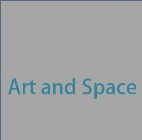A New Environment: Art and Space
 Japan has seen many kinds of art events open in recent years. Galleries, both domestic and abroad, are
Japan has seen many kinds of art events open in recent years. Galleries, both domestic and abroad, are
participating in art fairs to sell their work; artists from overseas are staying in Japan and making art through
residency programs; broad ranges of contemporary art from all over the world are being exhibited at the
Triennale in Tokyo, to name a few examples. And with businesses contributing as well, by sponsoring young
artists and holding competitions, it seems that the Japanese art market is finally starting to flourish.
Almost all of Japan’s prefectures now have art museums, and many people show interest in and appreciation
for art. However, people still visit art museums as no more than spectators, and do not generally consider
purchasing the art they see. This has become an especially noteworthy issue since the economic downturn
that began in September 2008. But it might also be due in part to the seemingly low interest in contemporary
art for those who visit art museums and art events.
Art in its essence, should be free from any justification or purpose. But contemporary art in Japan lacks that
freedom. That anyone may approach art freely, regardless of its price or popularity but entirely by the way it
makes them feel, is stillidealistic. That anyone may freely find artists they like and buy art in the same way they
buy food or clothing - as a normal, everyday pleasure – is, for now, a dream.
To address these issues, we held three different public art events.
One of these events was at Daikanyama Hillside Terrace in Tokyo. The building was designed by renowned
Japanese architect Fumihiko Maki to combine residences, shops, and office spaces. We also held an exhibition
at La Cittadella, a commercial establishment in Kawasaki designed by John Jerde, who has produced some of
the best architecture in the world. He modeled La Cittadella after an Italian hill town, and created commercial
spaces for movie theaters, shops, restaurants, and wedding halls. Our third location was Red Brick Park,
a neighborhood open space and park area in Yokohama Bay that in 2002 saw historical buildings from the 1900s
converted for use as cultural and commercial facilities.
Each artist’s display worked to create harmony between the art and the space where it was set up. Drawing,
painting, film, sculpture, mixed media, and other types of art were all exhibited. Not limiting the event to specific
genres, we wanted to showcase all forms of expression in contemporary art and overturn any preconceived ideas
about what it can or should be. At our exhibitions, attendees were able to get a sense of the artists’ feelings and
intentions as soon as they set foot on the exhibition floor.
Further, because art appreciation can be cultivated from childhood onward, we created workshops for participants
of all ages, and made a space for hands-on art activities. These workshops and activities aimed at raising the
standard for art culture in all facets. We think this will help lay the foundation for more artists and fans of art in the
future.
We also made it easy to navigate the show floor and smoothly flow from one area to the next. The rooms were
quite spacious, so attendees could use checkpoints to guide themselves while enjoying the event. Attendees were
also able to vote for work that they liked the most, allowing artists to receive tangible feedback from their audience.
This voting system created a closer relationship between the artists, the art, and the audience; and a more open
forum for viewers and purchasers.
This project attempted to make an art event where guests did not just experience the art visually, but sensed the
physical space, as well. We used this approach to unlock the potential of the connection to the exhibition spaces,
and to show attendees “a new environment created by both art and architecture.”
